What Causes the Auroral Lights?
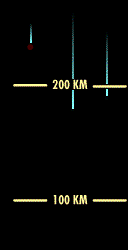 
This animation demonstrates very simply how different elements at different heights, let off energy that we see as different colors. You'll notice in the static aurora picture, it almost seems as if there are layers of colors one on top of the other.
Movie adapted from original clips provided courtesy of Professor Patricia Reiff, Rice University Connections Program
|
High speed ions and electrons travel along magnetic field lines and impact the atmosphere in the region called the auroral oval. Atmospheric gases are excited by these high speed collisions and give off different types of light as they relax back to their normal states. The color and altitude of the aurora tell us which atmospheric gases are being excited. - Below 60 miles in altitude, nitrogen is responsible for blue and red auroral light.
- Above this and upwards to 150 miles altitude, green light is produced by excited oxygen atoms.
- Above 150 miles, red light from oxygen dominates the auroral glow.
Since blue, green and red light are being produced in various combinations at various altitudes, it mixes to give an incredible variety of colors (such as purple and pink).
|
 Visit the
Space Weather section to learn more about the aurora
Visit the
Space Weather section to learn more about the aurora
You might also be interested in:

AU stands for Astronomical Units. Distances in space are too large to measure in Earth standards like miles or kilometers. For distances too large to measue in AU, we use light years. A light year is the
...more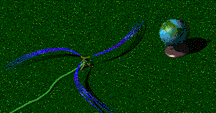
The solar wind is formed as the Sun's topmost layer blows off into space carrying with it magnetic fields still attached to the Sun. Gusts and disturbances form in the solar wind associated with violent
...more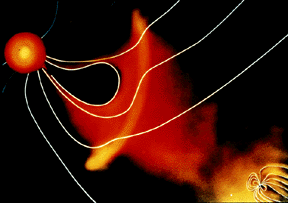
For a planet to be affected by a blob of material being ejected by the sun, the planet must be in the path of the blob, as shown in this picture. The Earth and its magnetosphere are shown in the bottom
...more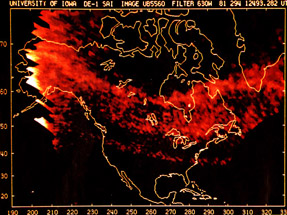
The aurora we are most familiar with is the polar aurora. This is what people are referring to when they speak of the northern or southern lights. But there are other less-known auroral activity, such
...more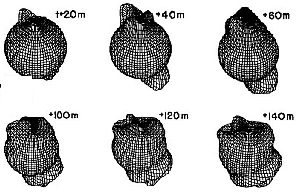
This figure shows the effect of the aurora on the atmosphere. When FAC's enter the atmosphere and create the aurora, they warm the atmosphere impulsively. This impulse travels throughout the atmosphere
...more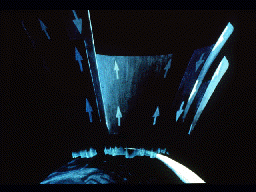
This picture illustrates the streaming of particles into and out of the auroral zone, as Field-aligned currents (FAC's) short-circuit through the ionosphere. Some of the particles entering the auroral
...more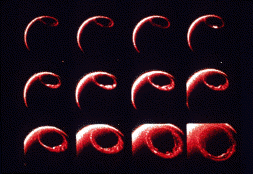
This figure shows a series of images of the auroral oval as it expands over the course of about an hour in response to a geomagnetic storm. This is an animation of the expanding auroral oval.
...more
 Visit the
Space Weather section to learn more about the aurora
Visit the
Space Weather section to learn more about the aurora
















